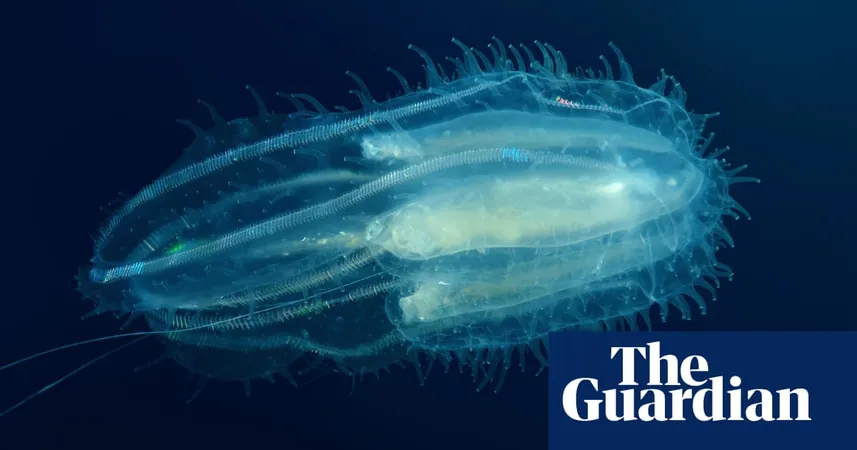
Shocking Discovery: Injured Comb Jellies Merge Into One!
2024-10-07
Author: Mei
Introduction
In a surprising twist reminiscent of a science fiction story, researchers have unveiled a fascinating behavior observed in comb jellies, known as "sea walnuts." These mesmerizing marine creatures have shown the ability to fuse together when injured—an astonishing phenomenon that raises questions about their biology and evolutionary history.
The Discovery
The groundbreaking discovery was made by a team at the University of California, Berkeley, led by Dr. Oscar Arenas, who stumbled upon an unusual individual with a curious shape while conducting experiments. This unique specimen had not one, but two backsides and two mouths—an anomaly that prompted the team to delve deeper into the biology of these enigmatic invertebrates.
Experimental Observations
What initially seemed to be an isolated observation sparked a series of experiments where pairs of sea walnuts were intentionally injured and then allowed to come into contact. The results were nothing short of remarkable: 90% of the paired jellies successfully fused together overnight! Subsequent trials showed that this fusion could even occur within just a few hours under controlled conditions.
Understanding the Mechanism
While grafting between comb jellies is not entirely new, this study enhances our understanding of the mechanism behind such phenomena. The researchers observed synchronized contractions in the fused creatures, suggesting a merging of their nervous systems—a crucial insight that could unlock the mysteries of nervous function in simpler organisms, which are believed to be evolutionary precursors to all animals.
Implications for Evolutionary Biology
Given that ctenophores are considered some of the oldest extant animals on Earth, this research sheds light on evolutionary processes, particularly those governing self-recognition and tissue regeneration. In a striking experiment, when one jelly was fed, the nutrients migrated into its partner's digestive system, highlighting a lack of mechanism to differentiate self from non-self in these organisms. However, they expelled waste unsynchronized, indicating some level of individuality remains intact.
Broader Impact of the Research
Dr. Arenas emphasized the wider implications of this discovery, asserting that it could provide vital insights into cellular recognition mechanisms during the formation of multicellular organisms. With approximately 150 species of ctenophores inhabiting our oceans, this fascinating study opens doors to explore how these organisms maintain their identities amid merging with their relatives.
Conclusion
This compelling research not only enriches our understanding of marine biodiversity but also poses philosophical questions about identity and individuality in the animal kingdom. As scientists continue to investigate the mysteries of life under the sea, one thing is certain: nature has a remarkable way of surprising us.



 Brasil (PT)
Brasil (PT)
 Canada (EN)
Canada (EN)
 Chile (ES)
Chile (ES)
 España (ES)
España (ES)
 France (FR)
France (FR)
 Hong Kong (EN)
Hong Kong (EN)
 Italia (IT)
Italia (IT)
 日本 (JA)
日本 (JA)
 Magyarország (HU)
Magyarország (HU)
 Norge (NO)
Norge (NO)
 Polska (PL)
Polska (PL)
 Schweiz (DE)
Schweiz (DE)
 Singapore (EN)
Singapore (EN)
 Sverige (SV)
Sverige (SV)
 Suomi (FI)
Suomi (FI)
 Türkiye (TR)
Türkiye (TR)